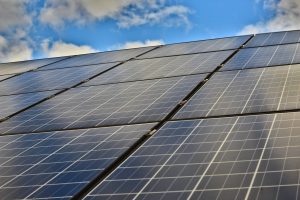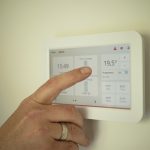The Fundamentals
Nearly Zero-Energy Buildings have gained prominence under the European Union’s directive to significantly reduce energy consumption in buildings by 2020 and beyond. These structures are designed to have a very low energy requirement, which can be mostly covered by renewable sources on-site or nearby. The core idea is to create buildings that contribute less to greenhouse gas emissions, aligning with broader climate goals such as those outlined in the Paris Agreement. European standards, such as the Energy Performance of Buildings Directive (EPBD), provide a regulatory framework that encourages the adoption of nZEB across member states, mandating that all new buildings must be nearly zero-energy by the end of 2020.
Role of Solar Panels in Designs
Solar energy technologies, particularly photovoltaic (PV) panels, are integral to achieving nZEB status. These panels convert sunlight directly into electricity, providing a clean and efficient source of power. Innovations like bifacial solar panels, which capture sunlight from both sides, and solar tracking systems enhance the efficiency of solar arrays. In the context of nZEB, solar panels not only reduce the building’s carbon footprint but also lower operational costs significantly over time. They are often paired with energy management systems like the German-developed SMA Solar Technology to optimize energy consumption and storage.
Practical Implementations Across the EU
Countries across the EU have adopted various approaches to integrate solar technology within nZEB frameworks. For example, Sweden’s Icehotel now uses solar panels to maintain its structure year-round, showcasing extreme innovation. In warmer regions, such as Greece and Italy, solar panels support air conditioning systems to reduce peak electricity loads during hot months. This practical application highlights the adaptability of solar technology in different European climates and cultural settings.
Technological Advancements and Economic Benefits
Emerging Technologies in Solar Energy
Recent advancements in solar technology have significantly increased the attractiveness of solar panels in nZEB projects. Perovskite solar cells, known for their high efficiency and lower production costs, are becoming a popular alternative to traditional silicon-based cells. Another exciting development is the integration of solar skins, which customize the appearance of solar panels to match the building’s exterior, enhancing aesthetic appeal without compromising functionality. These technologies not only boost the energy efficiency of buildings but also contribute to the architectural flexibility in nZEB designs.
Financial Incentives and Payback Periods
The economic argument for including solar panels in nZEB projects is strong, with various EU funding streams, like the Horizon 2020 program, supporting renewable energy projects. Investment in solar technology is also encouraged through tax benefits, reduced VAT rates, and feed-in tariffs, which provide financial incentives for energy produced. The payback period for solar installations has decreased to under 10 years in most EU countries, thanks to these incentives coupled with decreasing costs of solar technology. This financial framework not only makes solar panels a viable option but also an economically wise choice for long-term building sustainability.
Success Stories
Several EU-funded projects exemplify the successful integration of solar technology into nZEB. The Brøndby Solar Village in Denmark is a pioneer project where solar panels supply more than 50% of the annual energy consumption. Another noteworthy example is the Heliotrope in Germany, the first building in the world to generate more energy than it uses, largely due to its solar design. These case studies provide not only a blueprint for future nZEB projects but also tangible proof of the benefits and effectiveness of incorporating solar technology into building designs.
Policy Frameworks and Consumer Trends
EU Policies Driving Solar Adoption
The EU’s commitment to sustainability is evident in its legislative framework, which strongly supports the transition to renewable energy sources like solar power. Key policies, including the Renewable Energy Directive (RED) and the aforementioned EPBD, mandate member states to increase their use of renewable energy and improve overall energy efficiency. These policies create a conducive environment for solar technology adoption, driving innovation and investment in the renewable sector.
Consumer Demand and Market Growth
Public interest in sustainable living and renewable energy has surged, influencing market dynamics within the EU. Consumers are increasingly opting for homes with green certifications, and there is a growing trend towards self-produced energy, which solar panels facilitate. This shift not only reflects heightened consumer awareness but also aligns with broader EU objectives to enhance energy independence and security. The growing demand for solar-powered nZEBs indicates a robust market trajectory, promising a sustainable and resilient future for European housing.
Through strategic integration of solar technology, nZEB projects exemplify the optimal fusion of environmental sustainability and modern living standards. The widespread adoption and integration of solar panels within the nZEB framework exemplify a forward-thinking approach to urban development. This is further bolstered by robust policy support and a vibrant market for renewable technologies, creating a synergistic effect that propels the growth of nearly Zero-Energy Buildings.
Key Solar Technologies Enhancing Efficiency
In the pursuit of nZEB standards, several solar technologies stand out for their innovative features and enhanced performance:
- Photovoltaic-Thermal (PVT) Panels: These hybrid panels generate electricity and capture heat simultaneously, maximizing the energy harvested from a single installation. This dual functionality makes PVT panels particularly useful for climates with varied temperature extremes, as they can heat water and provide space heating in addition to electricity.
- Thin-film Solar Cells: Known for their flexibility and lower cost, thin-film solar cells can be integrated into building materials such as windows or roofs without altering the building’s aesthetic. Their lightweight nature and versatility make them ideal for retrofitting older buildings aiming for nZEB status.
- Integrated Battery Storage Systems: Pairing solar panels with battery storage systems allows buildings to store excess energy generated during peak sunlight hours. This not only ensures a stable energy supply during low light conditions but also enhances energy independence from the grid, crucial for achieving nZEB criteria.
As the EU continues to push towards its ambitious 2030 and 2050 energy and climate targets, the role of solar panels in achieving these goals becomes increasingly crucial. By leveraging state-of-the-art solar technologies and benefiting from substantial financial incentives, EU citizens are paving the way for a revolution in how buildings are powered—making a significant impact on energy consumption patterns across the continent.



